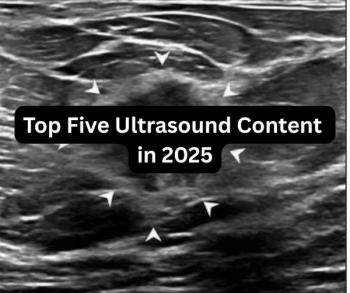
Reduced-dose CT Determines Intervention in Urologic Patients
CT, with lower radiation dose, can help emergency room physicians determine which patients with ureteral stones need further intervention.
A reduced-dose CT protocol can help identify patients with moderate to high likelihood of ureteral stones who may require urologic intervention, according to a study published in
Researchers from Connecticut, Virginia, and California performed a prospective study to determine if a reduced-dose CT protocol could effectively help to identify patients in the emergency department with moderate to high likelihood of calculi who would require urologic intervention within 90 days.
The researchers used previously derived and validated STONE clinical prediction rule of five elements: sex, timing, origin, nausea, and erythrocytes. Patients who scored a high STONE score (STONE score, 10–13) underwent reduced-dose CT, while those with moderate likelihood of ureteral stone (moderate STONE score, 6–9) underwent reduced-dose CT or standard CT based on clinician discretion. The patients were followed for up to 90 days after initial imaging for clinical course and for the primary outcome of any intervention.
A total of 264 participants enrolled in the study and 165 reduced-dose CTs were performed; 108 patients underwent reduced-dose CT alone with complete follow-up. Overall, 46 of 264 (17.4%) of patients underwent urologic intervention, and 25 of 108 (23.1%) patients who underwent reduced-dose CT underwent a urologic intervention; all were correctly diagnosed on the clinical report of the reduced-dose CT. The average dose-length product for all standard-dose CTs was 857 mGy · cm ± 395 compared with 101 mGy · cm ± 39 for all reduced-dose CTs (average dose reduction, 88.2%). The researchers noted that there were five interventions for nonurologic causes, three of which were urgent and none of which were missed when reduced-dose CT was performed.
The researchers concluded that a CT protocol with over 85% dose reduction can be used in patients with moderate to high likelihood of ureteral stone to safely and effectively identify patients in the ED who will require urologic intervention.
Newsletter
Stay at the forefront of radiology with the Diagnostic Imaging newsletter, delivering the latest news, clinical insights, and imaging advancements for today’s radiologists.




























